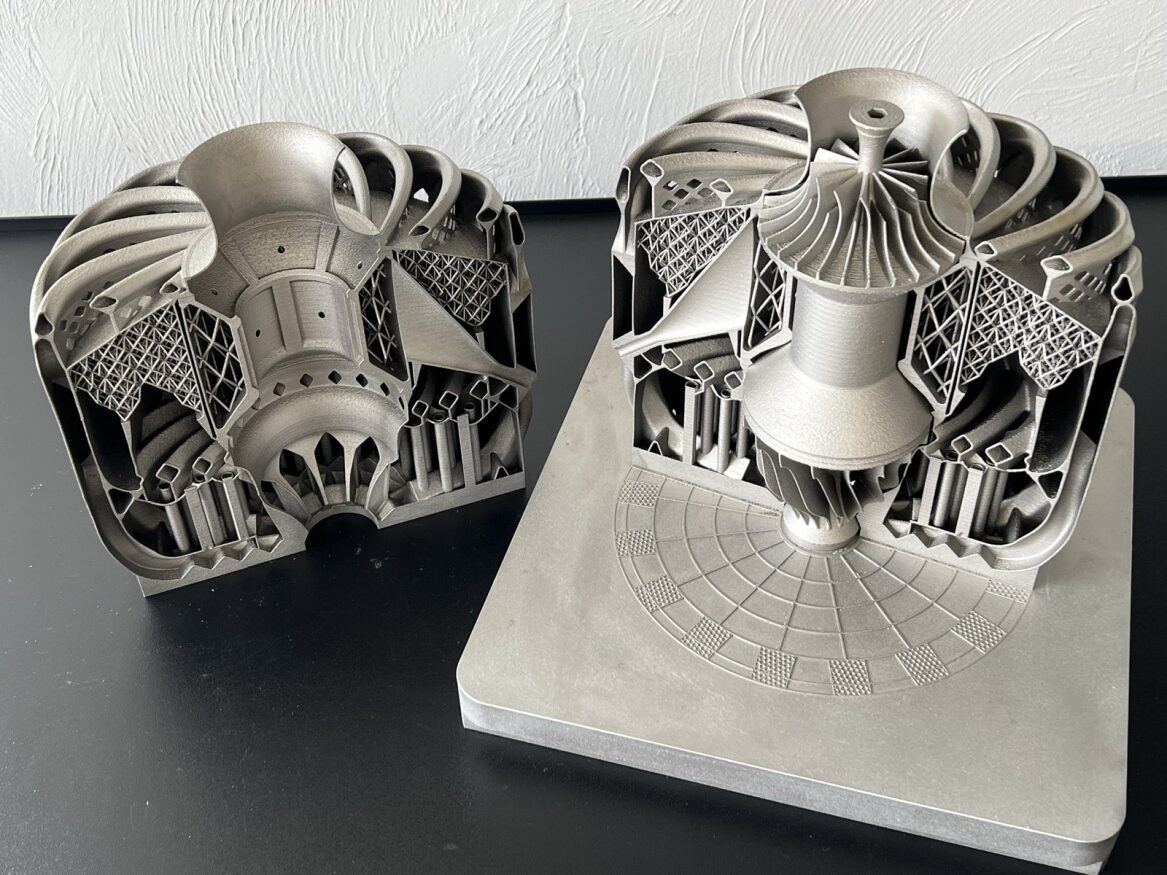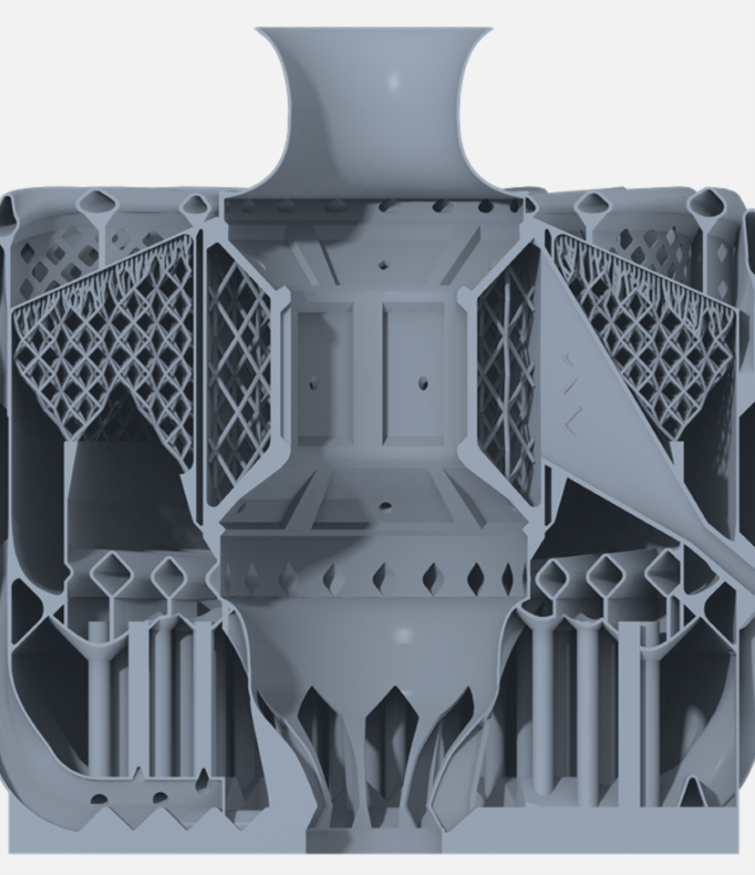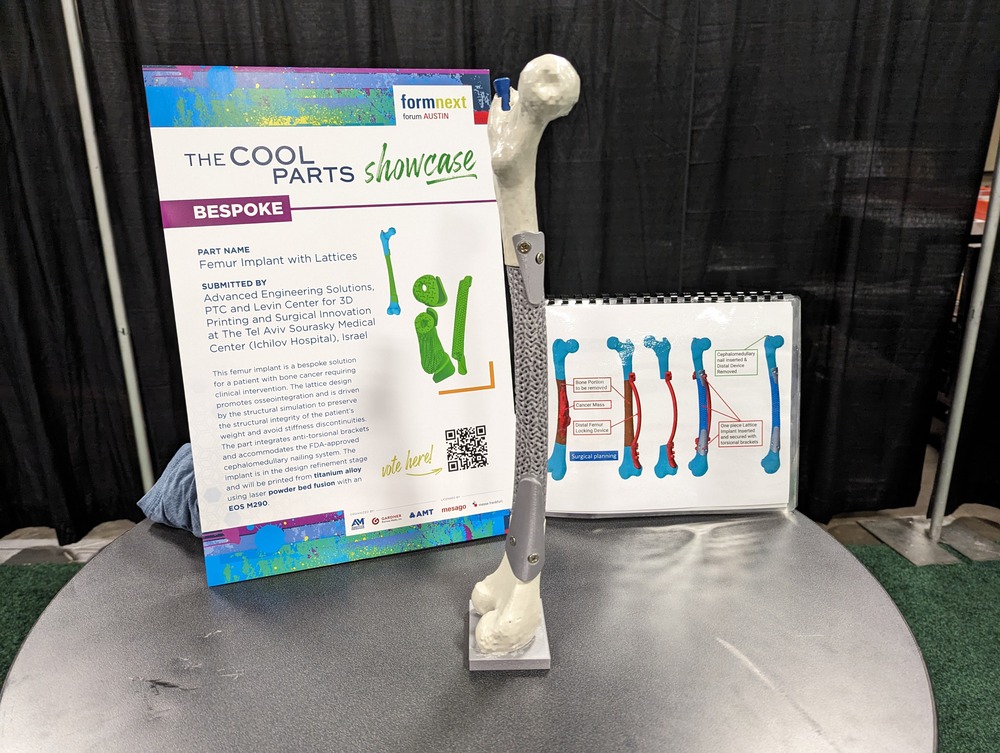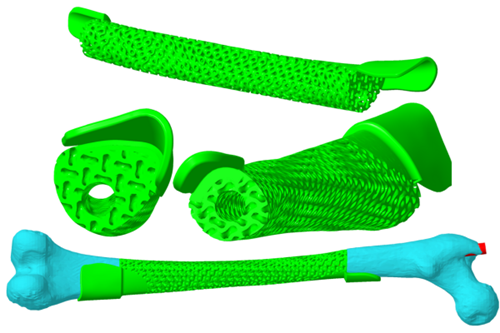Creo Excels at the 2023 Cool Parts Showcase
Innovation in 3D printing technology continues to push the boundaries of what’s possible, revolutionizing industries and transforming lives. The 2023 Cool Parts Showcase featured multiple groundbreaking 3D-printed products designed in Creo, demonstrating the remarkable potential of additive manufacturing.
Let’s take a closer look at the two product winners created in Creo: the Pre-Assembled Turbojet Engine and the Bespoke Femur Implant with Lattices. Congratulations to the winners!
Best Proof-of-Concept Part Category: Pre-Assembled Turbojet Engine
Advanced propulsion systems are essential for aerospace and defense applications. The Pre-Assembled Turbojet Engine, a collaborative project between Technion – Israel Institute of Technology, PTC, the von Karman Institute for Fluid Dynamics, and Izmir Katip Celebi University, is nothing short of extraordinary.

Streamlined design
This turbojet engine is an engineering marvel, showcasing the possibilities of 3D printing in the aerospace industry. What sets it apart is its streamlined design, featuring only two major components: a static casing with an embedded combustion chamber and a rotating shell structure.
Benefits of a single print
The decision to produce the engine as a single uninterrupted print brings numerous advantages. It significantly reduces manufacturing complexity, minimizes supply chain dependencies, and ultimately cuts production costs, making it a cost-effective solution for aerospace applications. This turbojet model takes Design for Additive Manufacturing (DfAM) to a new level by consolidating components and minimizing assembly operations.

Material and printing
To bring this concept to life, the turbojet engine was 3D printed using Inconel 718, a high-strength, heat-resistant alloy. The engine was printed successfully on both EOS M290 and M300 printers, ensuring the precision and reliability necessary for aerospace components.
Implications for the industry
The Pre-Assembled Turbojet Engine exemplifies the potential of additive manufacturing to revolutionize the aerospace and defense sectors. By simplifying design and production processes, it not only reduces costs but also paves the way for more efficient and sustainable aviation solutions.
Best Bespoke Solution Category: Femur Implant with Lattices
Imagine the challenge of creating a customized solution for a patient with bone cancer, where precision and structural integrity are paramount. That's where the Femur Implant with Lattices, developed by Advanced Engineering Solutions (AES), comes into play. This bespoke implant is a product of a strategic partnership between PTC and the Levin Center for 3D Printing and Surgical Innovation at The Tel Aviv Sourasky Medical Center (Ichilov Hospital), Israel.

Design and purpose
The Femur Implant with Lattices is a testament to the power of collaboration between medical experts and engineers. This implant is specifically designed for a patient requiring clinical intervention due to bone cancer. Its lattice structure serves a dual purpose: promote osseointegration and preserve the patient's structural integrity while avoiding stiffness discontinuities.
Innovative features
What makes this implant truly unique is its incorporation of anti-torsional brackets and compatibility with the FDA-approved cephalomedullary nailing system. These features ensure that the implant not only supports the patient's weight but also provides a secure and reliable solution for long-term use.

Leadership and technology
The project was led by Dr. Solomon Dadia of Ichilov Hospital and Dr. Andreas Vlahinos of AES, both of whom leveraged PTC Creo Additive Manufacturing solutions to bring this innovative implant to life.
Future prospects
Currently in the design refinement stage, this bespoke implant will soon be printed using titanium alloy via laser powder bed fusion with an EOS M290 printer. Its development represents a significant stride in personalized healthcare solutions, offering hope to patients facing complex medical challenges.
The winners of the 2023 Cool Parts Showcase have demonstrated the incredible potential of Creo and its fully integrated additive manufacturing capabilities in pushing the boundaries of innovation. Whether it's designing revolutionary aerospace components or creating bespoke implants to improve the lives of patients, these achievements highlight the transformative power of collaboration between technology, engineering, and medicine. As we look to the future, it's clear that additive manufacturing will continue to shape industries and improve lives in ways we can only begin to imagine.